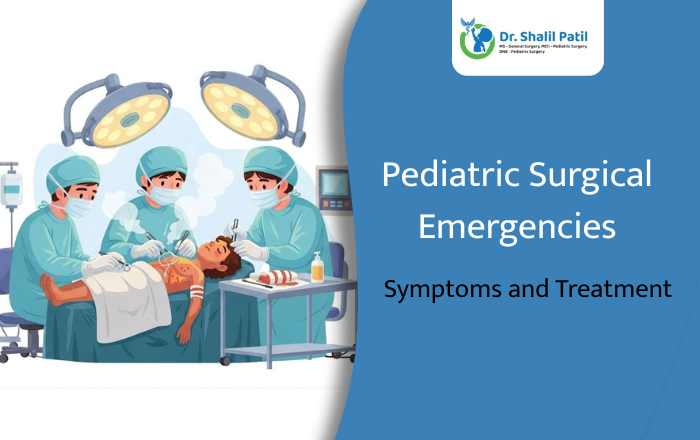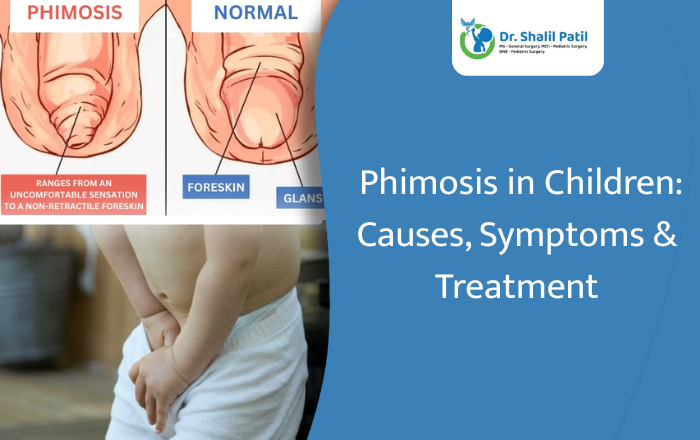As a parent, few things are more frightening than seeing your child in pain and not knowing if it’s something serious. Children can’t always tell us exactly what’s wrong, which makes recognizing pediatric surgical emergencies crucial for every parent and caregiver.
A pediatric surgical emergency is a serious condition that needs immediate medical attention to prevent complications. Unlike adults, children’s bodies can deteriorate quickly, so knowing the warning signs can truly save lives. This guide will help you understand common surgical emergencies in children, what symptoms to watch for, and when to rush to the hospital.
What Makes Pediatric Surgical Emergencies Different?
Children are not just small adults—their bodies work differently. Diseases progress faster in kids, and they often can’t describe their symptoms clearly. A toddler might just cry inconsolably, while an infant may become unusually quiet.
These subtle changes can be your first clue that something is seriously wrong.
True emergencies need treatment within hours, while urgent conditions can wait a day or two. The key is recognizing which is which.
Common Pediatric Surgical Emergencies
▹Appendicitis
This is the most common surgical emergency in children. The appendix becomes inflamed and can burst if not treated quickly. Watch for pain that starts around the belly button and moves to the lower right side, fever, vomiting, and loss of appetite. If your child pulls their knees to their chest or cries when you touch their stomach, don’t wait—head to the emergency room.
▹Intussusception
This happens when one part of the intestine slides into another, like a telescope. It’s most common in babies between 6 months and 3 years old. The classic signs are sudden, severe crying episodes every 15-20 minutes, vomiting, and bloody stool that looks like “currant jelly.” This needs immediate treatment to save the intestine.
▹Intestinal Obstruction
When something blocks the intestine, food and liquid can’t pass through. Children will have severe abdominal pain, swelling, vomiting (sometimes green or yellow bile), and won’t be able to pass stool or gas. This can happen from hernias, twisted intestines, or swallowed objects.
▹Testicular Torsion
This emergency affects boys when the testicle twists, cutting off blood supply. There’s only a 6-hour window to save the testicle. Sudden, severe pain in the scrotum, swelling, nausea, and vomiting are warning signs. Never ignore testicular pain in boys—it’s always an emergency.
▹Incarcerated Hernia
A hernia happens when an organ pushes through a weak spot in the muscle. When it gets stuck and can’t be pushed back, it’s called incarcerated. The trapped tissue can die without blood flow. Look for a painful lump in the groin or belly button that’s red, swollen, and tender.
Warning Signs You Should Never Ignore
Trust your gut feeling as a parent. If something seems very wrong, it probably is. Here are red flags that mean you should seek immediate medical care:
Abdominal symptoms:
- Severe pain that gets worse, not better
- Hard, swollen belly
- Vomiting repeatedly, especially if green or bloody
- Blood in stool
- Can’t pass stool or gas for more than a day
Behavior changes:
- Extreme fussiness or unusual sleepiness
- Won’t eat or drink anything
- Fever with stomach pain
- Crying that won’t stop, especially in infants
Physical signs:
- Pale or bluish skin
- Fast breathing or trouble breathing
- Rapid heartbeat
- Cold hands and feet
What Happens in the Emergency Room?
When you arrive at the hospital, doctors will examine your child and ask about symptoms. They may order blood tests, ultrasounds, or X-rays to understand what’s happening inside. These tests are safe for children and help doctors make quick, accurate decisions.
If surgery is needed, the doctor will explain everything and answer your questions. Modern pediatric surgery often uses small incisions and special cameras, which means less pain and faster recovery for your child.
Why Timing Matters So Much
In surgical emergencies, every hour counts. Delayed treatment can lead to:
- Infection spreading through the body
- Permanent organ damage
- Longer hospital stays
- More difficult surgeries
- Life-threatening complications
Children who receive quick treatment usually recover faster and return to normal activities sooner. When you catch problems early, the surgery is often simpler and safer.
Recovery After Surgery
Most children bounce back quickly after surgery. Hospital stays vary—some kids go home the next day, while others need a few days for observation. Your doctor will give clear instructions for home care, including:
- How to care for the surgical site
- What activities to avoid
- When to give medications
- Signs of problems to watch for
- Follow-up appointment schedules
Children heal remarkably well when they receive proper care and plenty of rest.
Your Child’s Health Comes First
As parents, we worry about overreacting, but when it comes to potential surgical emergencies, it’s always better to be cautious. Your instincts matter. If you feel something is seriously wrong with your child, seek medical attention immediately.
Need a Trusted Pediatric Surgeon in Virar?
When urgent surgical care is needed, having an experienced pediatric surgeon makes all the difference. Dr. Shalil Patil is a dedicated pediatric surgeon in Virar who specializes in treating surgical emergencies in children of all ages.
Dr. Patil provides prompt, skilled surgical care with a gentle, child-friendly approach that helps both children and parents feel at ease during stressful situations. From appendicitis to complex conditions, Dr. Patil is equipped to handle urgent pediatric surgical needs.
Don’t wait when your child needs help.
📞 Contact Dr. Shalil Patil for emergency pediatric surgical care in Virar. Available for urgent consultations and same-day evaluations.
Your child’s health and recovery are our priority. Reach out today.




